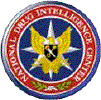ARCHIVED
January 1, 2006. This document may contain
dated information.
It remains available to provide
access to historical materials.
 |
|
||||||||
|
Printable brochure (166 KB pdf) |
Methadone
|
|
|
|
How is methadone used?
Some methadone tablets are designed to be swallowed intact, while others are intended to be dissolved first in liquid. Likewise, methadone is available either as a ready-to-drink solution or as a concentrate, which must be mixed first with water or fruit juice. Methadone also is available as a liquid that is administered via injection.
When used to treat narcotic addiction, methadone suppresses withdrawal symptoms for 24 to 36 hours. Individuals who are prescribed methadone for treatment of heroin addiction experience neither the cravings for heroin nor the euphoric rush that are typically associated with use of that drug.
Who abuses Methadone?
It is difficult to gauge the extent of methadone abuse in the United States because most data sources that quantify drug abuse combine methadone with other narcotics. This lack of statistical information renders it impossible to describe a typical methadone abuser. Information provided by the Treatment Episode Data Set does reveal that the number of individuals who were treated for abuse of "other opiates" (a category that includes methadone) increased dramatically from 28,235 in 2000 to 36,265 in 2001. These individuals were predominantly Caucasian; they were nearly evenly split between males and females and represented various age groups.
Methadone abuse among high school students is a concern. Nearly 1 percent of high school seniors in the United States abused the drug at least once in their lifetime, according to the University of Michigan's Monitoring the Future Survey.
What are the risks?
Individuals who abuse methadone risk becoming tolerant of and physically dependent on the drug. When these individuals stop using the drug they may experience withdrawal symptoms including muscle tremors, nausea, diarrhea, vomiting, and abdominal cramps.
Overdosing on methadone poses an additional risk. In some instances, individuals who abuse other narcotics (such as heroin or OxyContin) turn to methadone because of its increasing availability. Methadone, however, does not produce the euphoric rush associated with those other drugs; thus, these users often consume dangerously large quantities of methadone in a vain attempt to attain the desired effect.
Methadone overdoses are associated with severe respiratory depression, decreases in heart rate and blood pressure, coma, and death. The Drug Abuse Warning Network reports that methadone was involved in 10,725 emergency department visits in 2001--a 37 percent increase from the previous year.
What is it called?
Street Terms for Methadone
|
Is abusing methadone illegal?
Yes, abusing methadone is illegal. Methadone is a Schedule II substance under the Controlled Substances Act. Schedule II drugs, which include cocaine and methamphetamine, have a high potential for abuse. Abuse of these drugs may lead to severe psychological or physical dependence.
Other products of interest:
Check out Fast Facts on:
- Crack cocaine
- Crystal methamphetamine
- Drug-facilitated sexual assault
- Drug paraphernalia
- DXM
- Fentanyl
- Foxy
- Fry
- GHB and analogs
- Heroin
- Inhalants
- Jimsonweed
- Ketamine
- Khat
- LSD
- Marijuana
- MDMA
- Methamphetamine
- Methamphetamine laboratory hazards
- OxyContin
- PCP
- Powdered cocaine
- Prescription drugs
- Psilocybin
- Ritalin
- Rohypnol
- Salvia divinorum
- Steroids
- Teens and drugs
- Triple C
- Yaba
Also available from NDIC:
- Huffing--The Abuse of Inhalants
- Prescription Drug Abuse and Youth
- Drugs, Youth, and the Internet
For more information on illicit drugs check out our web site at: www.usdoj.gov/ndic. Call 814-532-4541 to request NDIC products.
Contact us
Our addresses:
National Drug Intelligence Center
319 Washington Street, 5th Floor
Johnstown , PA 15901-1622
Telephone: 814-532-4601
FAX: 814-532-4690NDIC Washington Liaison Office
8201 Greensboro Drive, Suite 1001
McLean , VA 22102-3840
Telephone: 703-556-8970
FAX: 703-556-7807NDIC publications are available on the following web sites:
ADNET http://ndicosa
LEO home.leo.gov/lesig/ndic
RISS ndic.riss.net
INTERNET www.usdoj.gov/ndic

